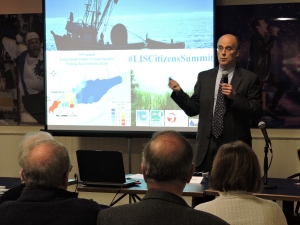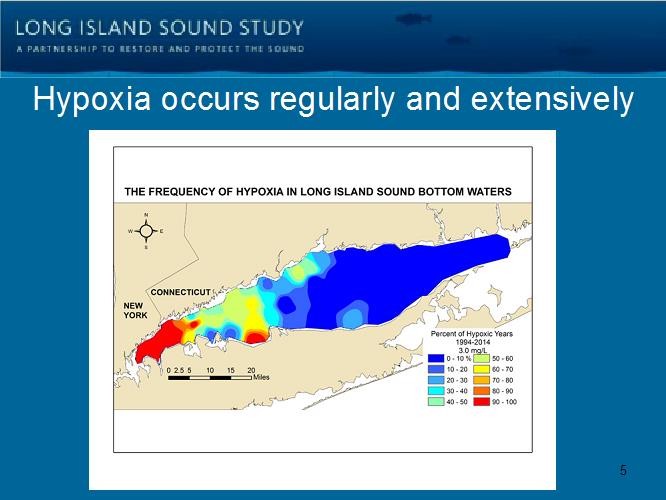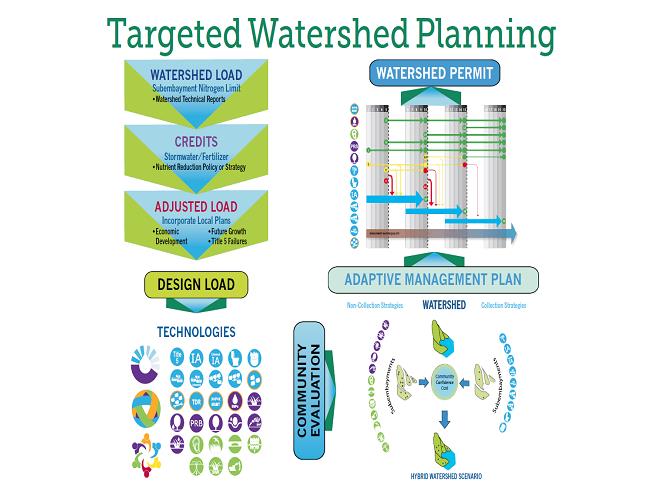The 2015 Long Island Sound Citizens Summit, “Coming back from the Brink: Nitrogen and the Sound’s Health and Economy,” was a huge success thanks to the diverse and informative expert speakers and the highly engaged audience.
For over 100 years nitrogen pollution has wreaked havoc on the Sound’s ecosystem. In response, Connecticut and New York, with the approval of the EPA, created a 15-year plan (the Total Maximum Daily Load, or TMDL) to slash nitrogen. This year’s Summit took stock of the Sound’s progress and identified priorities for its future.
The morning kicked off with a welcome address by Don Strait, president of Connecticut Fund for the Environment and its bi-state program Save the Sound, who weaved the day’s themes together while touching on the economics of the Sound.

Without wasting any time, we invited our first expert panel, Nitrogen Pollution’s Path of Destruction, to set the foundation and explain the impacts nitrogen has had and continues to have on our waters and aquatic wildlife. In addition to fueling algae blooms and low-oxygen dead zones in the Sound, recent science indicates that excess nitrogen is also a significant problem for bays, a driver of wetlands loss and the growing problem of localized ocean acidification in the Sound. One of the most surprising points was that the emerging science from Mumford Cove in Groton, CT seems to show that negative impacts on coastal organisms are magnified when low dissolved oxygen (caused in part by excess nitrogen) combines with low pH. Panelist slides for this presentation can be found here and their contact information here.
Mark Tedesco, Long Island Sound Director for the U.S. Environmental Protection Agency, gave a history of combating nitrogen pollution in the Sound, from early efforts to the TMDL goals currently in effect. Mark identified areas of the Sound facing the greatest impacts from nitrogen, and highlighted both challenges and success stories in cleaning it up. To view Mark’s slides click here. Curt Johnson, executive director of Save the Sound, discussed the petition that CFE/Save the Sound recently submitted to the EPA requesting a strengthened, updated nitrogen reduction plan that includes inputs from upstream sources. Curt’s slides are available here. Contact information for Mark and Curt can be found here.
We invited experts from around the Northeast to our second panel of the day, Lessons Learned—Nitrogen Pollution and Solutions in the Northeast. Panelists talked about the impacts of nitrogen pollution in Cape Cod, the Peconic Bay, and other areas, and the partnerships and policy approaches they have found successful. Highlights included an overview of nitrogen sources that reveled that septic systems were much greater contributors than previously thought; a review of Cape Cod’s cutting edge 208 Plan, which considers a range of solutions – both traditional collection and treatment and non-traditional watershed and embayment technologies; policy considerations in the Peconic Bay; and a discussion of new treatment technology that can help minimize nitrogen in Long Island’s groundwater. A full display of slides can be found here and contact information for this panel can be accessed here.

The lunch discussion was packed with information from Connecticut state Senator Ted Kennedy, Jr., and Bridgeport’s Mayor Bill Finch on past, present, and future local and state environmental initiatives around clean water, plastics reduction, and sustainable cities. Their message: legislation can only do so much. We need to take responsibility and actions on our own and as environmental stewards to induce change, starting in our own neighborhoods. Karen Brown of the Long Island Sound Funders Collaborative explained the Collaborative’s new model for cooperative and innovative funding of projects that will make a difference for the Sound.
It was a tough act to follow, but our agency leaders and local legislators were thought-provoking, providing up-to-date information about ongoing and future action items on the table in the What’s Next for Nitrogen panel. This discussion pointed to potential successes from the decades of nitrogen work: Summer 2014 DO conditions were generally better than the long term average; and brought to light the need to work on more diffuse sources to combat nitrogen laden stormwater by providing municipalities with incentives, and enforcing permits. We were thrilled that Connecticut state Representative Jonathan Steinberg and New York state Assemblyman Steve Otis were able to join the discussion, bringing local perspectives from around the region and the need for continued investment in sewage and stormwater infrastructure. You can contact our panelists here and view a full list of their slides here.
Last, but certainly not least, our day ended with the Alternative Technologies and Innovative Solutions panel, which highlighted new and unusual strategies that are cutting nitrogen inputs. Experts from New York and Connecticut shared their innovative work with the audience and provided their “Top 2 Next Steps:”
- Local Level Embayment Studies
- More High-Level Landscaping Education
- Reach Home Owners with Best Practices in lawn care
- Expand Opportunities for Seaweed through Regulatory Reform
- Take Advantage of $5 million New York Department of Environmental Conservation Comprehensive Plan
- Break Down Regulatory Barriers
- Incentivize Farmers to Use Less Fertilizer
- Increase Research $ for Short Season Crop Fertilizers
- Buy Local
- Establish Technical Teams
The audience ranked additional Priority Actions from the panel, including:
- Training
- Technical Assistance
- Land Protection
- Restoration of Coastal Habitats
- New Technology (Research)
- Innovative Implementation
- Opening New Markets to Seaweed and Other Aquaculture
- Getting Away from Grandfathering—It’s Time to Start Upgrades on All Infrastructure
- Building Personal Relationships
- Make Science Available to Private Sector
- Valuing Ecosystem Services
Please reach out to any of the panelists from this final discussion here. You can view their slides here.
We invite you to provide your own next steps to decrease nitrogen in Long Island Sound. Please respond to bchamberlin-martin@savethesound.org or comment below with your thoughts.
Thank you for a fantastic event and see you next year!
We are grateful to the Long Island Sound Study and the New England Interstate Water Pollution Control Commission for their partnership in hosting the Long Island Sound Citizens Summit each year.
